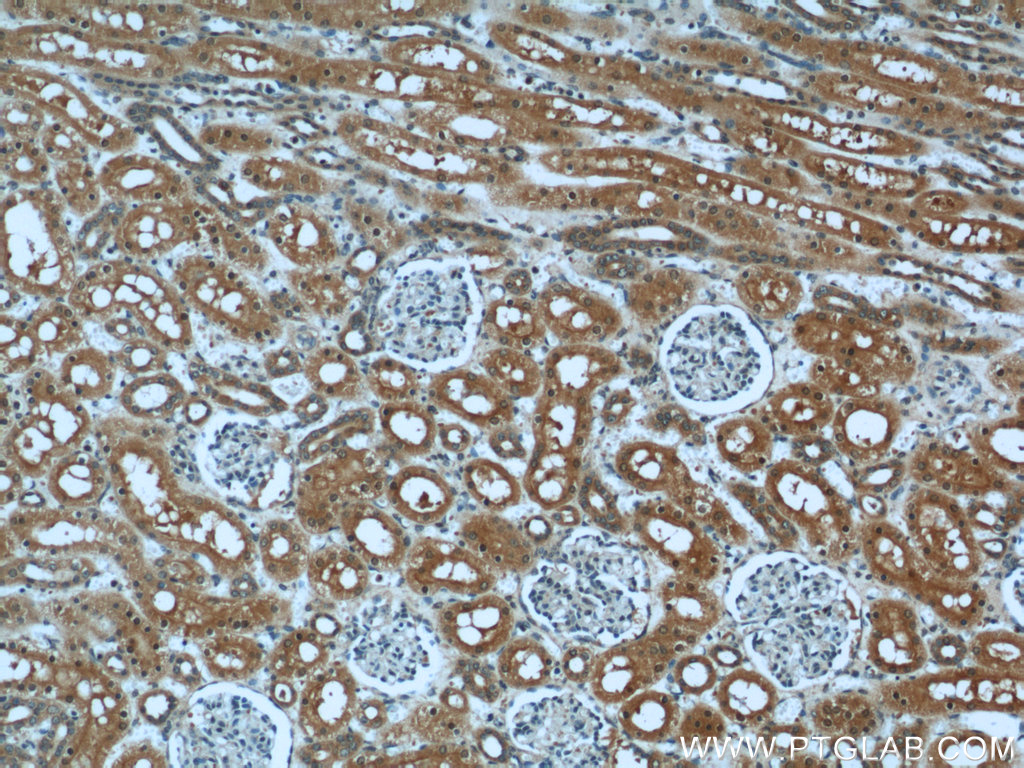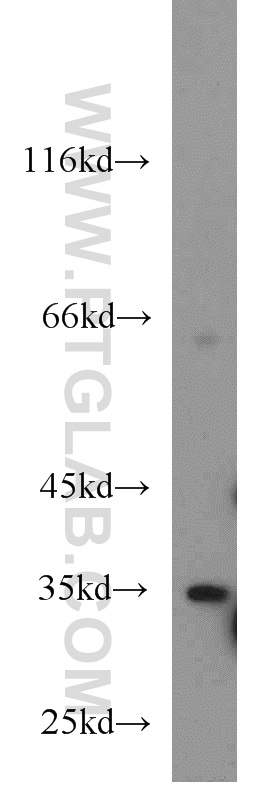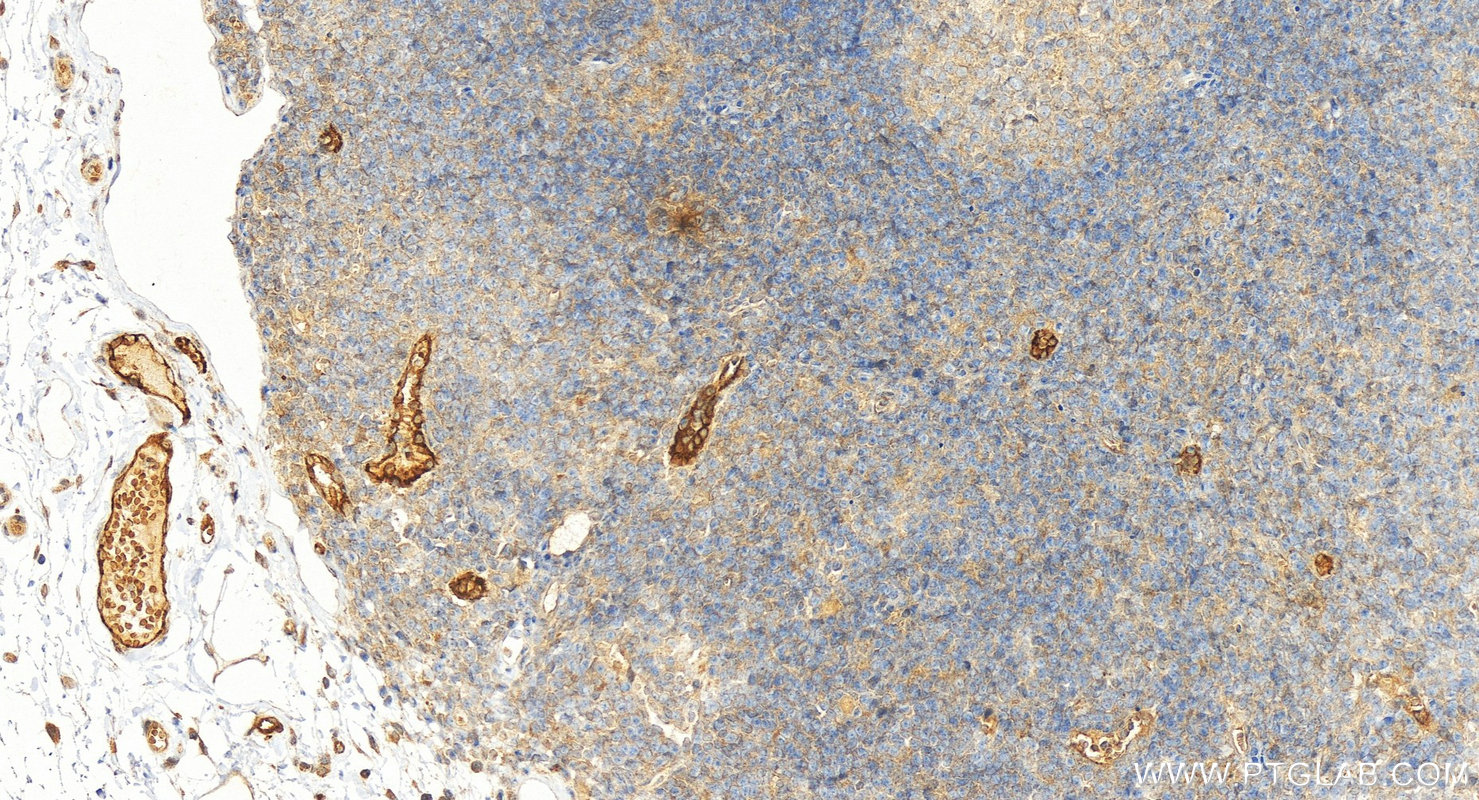验证数据展示
经过测试的应用
| Positive WB detected in | human kidney tissue, K-562 cells |
| Positive IHC detected in | human colon tissue, human kidney tissue Note: suggested antigen retrieval with TE buffer pH 9.0; (*) Alternatively, antigen retrieval may be performed with citrate buffer pH 6.0 |
推荐稀释比
| 应用 | 推荐稀释比 |
|---|---|
| Western Blot (WB) | WB : 1:500-1:1000 |
| Immunohistochemistry (IHC) | IHC : 1:50-1:500 |
| It is recommended that this reagent should be titrated in each testing system to obtain optimal results. | |
| Sample-dependent, Check data in validation data gallery. | |
产品信息
55185-1-AP targets DARC in WB, IHC, IF, ELISA applications and shows reactivity with human samples.
| 经测试应用 | WB, IHC, ELISA Application Description |
| 文献引用应用 | WB, IHC, IF |
| 经测试反应性 | human |
| 文献引用反应性 | human, mouse |
| 免疫原 |
Peptide 种属同源性预测 |
| 宿主/亚型 | Rabbit / IgG |
| 抗体类别 | Polyclonal |
| 产品类型 | Antibody |
| 全称 | Duffy blood group, chemokine receptor |
| 别名 | ACKR1, Atypical chemokine receptor 1, CCBP1, CD234, Dfy |
| 计算分子量 | 36 kDa |
| 观测分子量 | 33-35 kDa |
| GenBank蛋白编号 | NM_002036 |
| 基因名称 | DARC |
| Gene ID (NCBI) | 2532 |
| RRID | AB_10838809 |
| 偶联类型 | Unconjugated |
| 形式 | Liquid |
| 纯化方式 | Antigen affinity purification |
| UNIPROT ID | Q16570 |
| 储存缓冲液 | PBS with 0.02% sodium azide and 50% glycerol, pH 7.3. |
| 储存条件 | Store at -20°C. Stable for one year after shipment. Aliquoting is unnecessary for -20oC storage. |
背景介绍
CD234, also named as DARC, Duffy, FY and GPD, belongs to the G-protein coupled receptor Duffy family. It is a non-specific receptor for many chemokines such as IL-8, GRO, RANTES, MCP-1 and TARC. It is also the receptor for the human malaria parasites Plasmodium vivax and Plasmodium knowlesi. This antibody is specific to CD234.
实验方案
| Product Specific Protocols | |
|---|---|
| IHC protocol for DARC antibody 55185-1-AP | Download protocol |
| WB protocol for DARC antibody 55185-1-AP | Download protocol |
| Standard Protocols | |
|---|---|
| Click here to view our Standard Protocols |
发表文章
| Species | Application | Title |
|---|---|---|
Mol Carcinog SPP1+ Venous Endothelial Cells and CRABP2+ Tumor Cells Contribute to Favorable Body and Tail Pancreatic Ductal Adenocarcinoma Tumor Microenvironment |





